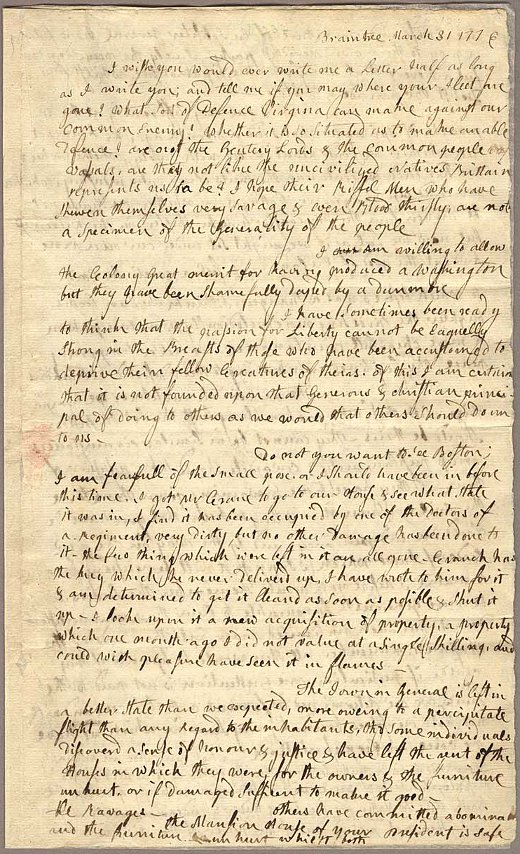

I have sometimes been ready to think that the passion for liberty cannot be equally strong in the breasts of those who have been accustomed to deprive their fellowcreatures of theirs. I am willing to allow the colony great merit for having produced a Washington but they have been shamefully duped by a Dunmore. Are not the gentry lords, and the common people vassals? Are they not like the uncivilized vassals Britain represents us to be? I hope their riflemen, who have shown themselves very savage and even blood-thirsty, are not a specimen of the generality of the people. I wish you would ever write me a letter half as long as I write you, and tell me, if you may, where your fleet are gone what sort of defense Virginia can make against our common enemy whether it is so situated as to make an able defense. Familiar Letters of John Adams and his Wife Abigail Adams, During the Revolution (excerpts) A. John’s letters on independence vault even beyond these hopes to an almost millennial vision of America and its great experiment in freedom and democracy. The Maletter from Abigail to John expresses the hope for a universal democracy, liberating women from the legal tyranny of their husbands, and suggesting a more equitable relationship between friends who are spouses. Their letters also provide glimpses into a time of momentous upheaval and change in American life, as John and Abigail were active participants in these changes. Their correspondence comprises 1,100 letters, giving glimpses into their frugalities, friendships, illnesses, parenting, and griefs-especially through the early death of their daughter and their last child being stillborn.

In 1818, Abigail died of typhoid fever, predeceasing John by eight years. After the war, John and Abigail would live separately and together in America and abroad until John retired from politics and returned permanently to Braintree.

Abigail remained in Braintree, managing their farm, enduring many privations and witnessing terrifying battles- experiences from which John was, to some degree, insulated.

The two were separated, however, starting in 1775 as he served in the congresses leading to the American Revolution. During the early years of their marriage, Abigail moved from one household to another in order to remain close to John. She fulfilled her expected role as wife when she married John in 1764 and as mother when she bore five children in seven years. She received no formal education, instead being guided by her mother in the domestic arts expected of women in that era. Abigail Adams née Smith was also born in Braintree, Massachusetts.


 0 kommentar(er)
0 kommentar(er)
